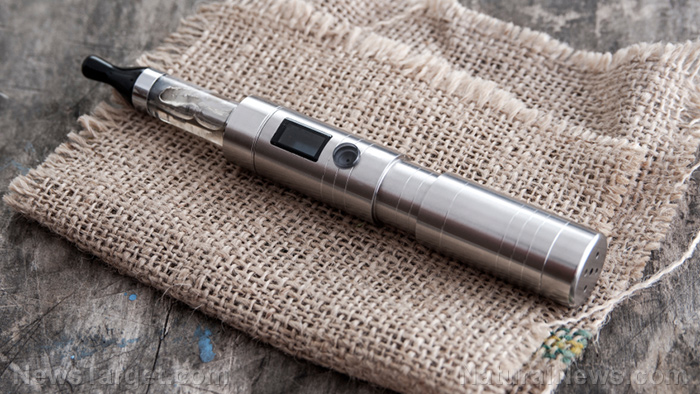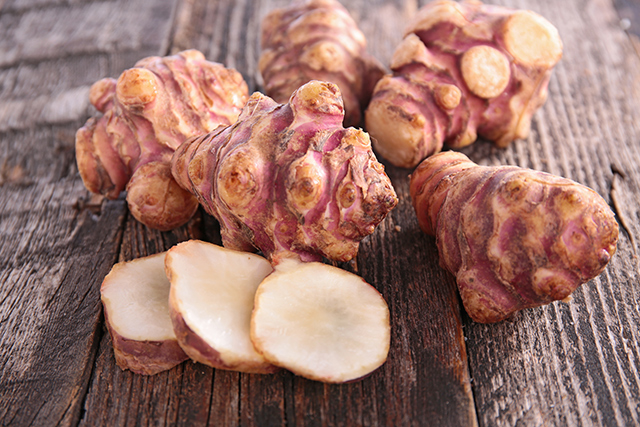More bad news for e-cigarette users: The flavors are just more toxic chemicals, warn scientists
07/13/2018 / By Ralph Flores

Just because it’s sweet, doesn’t mean it’s better for you. A recently published study discovered that chemicals and liquids used in flavoring e-cigarettes could result in a “significant inflammation” of monocytes, a type of white blood cell in the body. Additionally, the study pointed out that a lot of these compounds are toxic – with cinnamon, vanilla, and buttery flavors ranked to be worst – and that mixing e-cigarette flavors harms the body more, compared to exposure to just one kind of flavor.
The study, which was published in the open-access journal Frontiers in Physiology, adds weight to growing evidence of the dangers of e-cigarettes to a person’s health.
Led by researchers from the University of Rochester Medical Center, the study investigated the truth behind the claims saying that vaping e-cigarettes, which were touted to be nicotine-free, was safer than conventional cigarettes.
It noted that e-cigarettes have slowly been gaining ground in places like the U.S., where there are almost 500 brands available with 7,700 different flavors. The chemicals, when used in food, are classified as recognized as safe (GRAS). In addition, e-cigarettes have been advertised as the better alternative to cigarettes, and the flavors are regarded as safe for consumption. This has led to an increase in the number of e-cigarette users, especially with the youth, for the past two years. Studies have shown that youths who start with e-cigarettes carry over to regular cigarettes later on.
Earlier studies had already revealed that the flavors used in e-cigarettes were responsible for inflammatory and oxidative stress responses in lung cells. Moreover, there was also an increased level of oxidative stress found in the blood of people who smoked e-cigarettes.
The current study aimed to validate these claims, particularly its effect on monocytes, which are white blood cells that area part of the immune system. Researchers found that flavoring chemicals and e-liquids resulted in increased levels of biomarkers for inflammation and tissue damage from oxidative stress. Moreover, some chemicals also caused significant cell death.
“Cinnamon, vanilla, and butter flavoring chemicals were the most toxic but our research showed that mixing flavors of e-liquids caused by far the most toxicity to white blood cells,” explained first author Dr. Thivanka Muthumalage.
Meanwhile, senior author Dr. Irfan Rahman hopes that the data gathered by the study will open new avenues of research to further explore the harmful effects of flavored e-juices without nicotine.
“Currently, these are not regulated, and alluring flavor names, such as candy, cake, cinnamon roll, and mystery mix, attract young vapers,” he said. “Our scientific findings show that e-liquid flavors can, and should, be regulated and that e-juice bottles must have a descriptive listing of all ingredients. We urge regulatory agencies to act to protect public health.”
The researchers concluded that cinnamaldehyde, vanillin, and pentanedione to be the most toxic flavoring chemicals on monocytes. Many of the chemicals and e-liquids also caused a pro-inflammatory response on white blood cells, and that mixing multiple flavors caused the greatest level of cytotoxicity (or cell death).
“Based on flavoring chemical toxicity of the individual flavoring chemicals in e-liquids, flavors can be regulated,” they wrote. “Further, our data indicate that tighter regulations are necessary to reduce the risk of inhalation toxicity due to exposure to e-liquids without nicotine and flavoring chemicals.”
Learn more about the latest scientific breakthroughs on smoking by following Science.news today.
Sources include:
Tagged Under: artificial flavors, e-cigarettes, inflammation, monocytic blood cells, research, science, stop smoking, synthetic chemicals, toxic chemicals, toxic ingredients, toxic substances, toxins




















